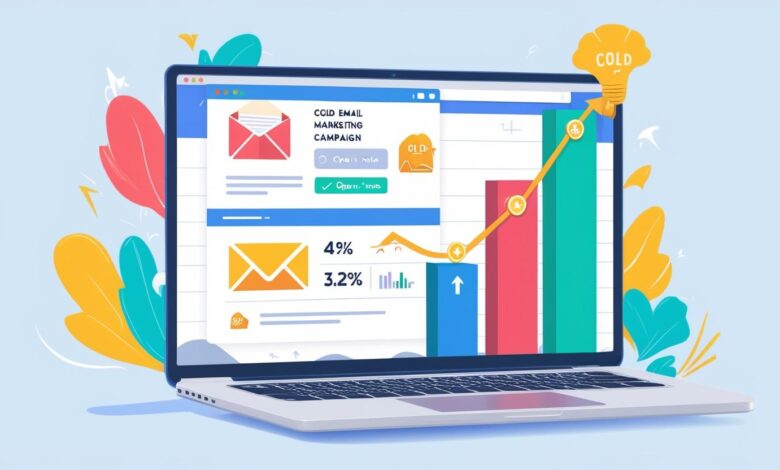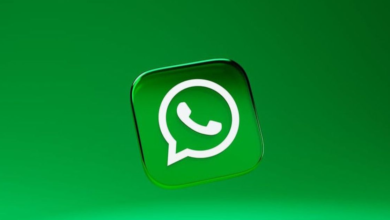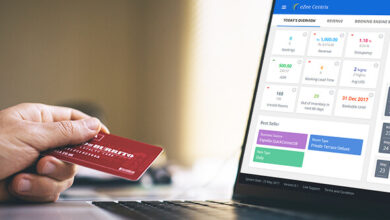How Do You Write a Good Cold Email Sequence for Maximum Engagement?

If you’re not using cold email sequences—or worse, using ineffective ones—you’re leaving money on the table. Cold emails can connect you with potential customers, boost engagement, and drive conversions, but poorly executed campaigns will end up in spam folders or ignored completely. The truth is, writing an effective cold email sequence isn’t just about throwing out a generic pitch; it’s about crafting emails that are targeted, valuable, and impactful.
By the time you finish reading, you’ll know exactly how to create a cold email sequence that drives maximum engagement and conversions. Let’s get started.
The Benefits of Using a Cold Email Sequence
Why bother with a cold email sequence? Because when done right, it’s like having your best salesperson continuously pitching on autopilot.
- Build Relationships: A well-thought-out sequence helps establish a connection with potential customers, creating a bridge to long-term relationships.
- Maximize ROI: Cold email sequences deliver a higher return on investment by targeting the right customers with tailored messaging.
- Start Conversations: They create opportunities for ongoing dialogues, giving prospects time to become familiar with your product or service.
Cold email sequences can also assist sales reps in building relationships with prospects by automating outreach efforts and providing educational content.
Cold emails work, but rushing them or spamming prospects with irrelevant pitches will only derail your efforts.
Characteristics of a Successful Cold Email Campaign
What separates cold emails that convert from the ones that land in spam folders? A winning sales cold email sequence shares these traits:
- Personable, Not Salesy: No one likes to feel like they’re being sold to. Focus on providing value.
- Relevant and Personalized: Tailor your message to address the recipient’s specific needs or pain points.
- Clear Goals: You need to know exactly what outcome you’re aiming for—whether it’s grabbing a 15-minute call or offering a free demo.
- Friendly, Non-Pushy Tone: Your emails should feel conversational, not like a hard-sell seminar.
If you’re unsure how to craft such a campaign, I’ve got you covered below.
Types of Cold Email Sequences
Depending on the result you’re chasing, you’ll want to choose the right type of email sequence. Here’s a breakdown:
- Nurturing Email Sequence
Builds trust with helpful, non-salesy information. Great for warming up cold leads. - Engagement Email Sequence
Sparks interest by asking questions or offering free trials and demos. - Conversion Email Sequence
Focuses on closing deals with personalized offers and action-oriented language. - Follow-Up Email Sequence
A follow up sequence nudges prospects who showed initial interest but need one last push to act. It should be carefully planned, with each email building on the previous one to guide leads through the sales funnel. Using automation tools can improve efficiency and response rates. - Re-Engagement Email Sequence
Reconnects with dormant leads by reintroducing valuable offerings.
Each sequence has its place, depending on your target audience and goal.
How to Create a Cold Email Sequence That Converts
You don’t need advanced degrees to write cold emails that convert. Just follow these six steps:
Creating your own cold email sequence is crucial for achieving optimum reply and open rates.
Step 1: Define a Clear Goal
What do you want your emails to accomplish? Are you looking to generate leads, set up sales calls, or build interest in your new product? A single focus ensures your messaging remains razor-sharp.
Step 2: Know Your Audience
Think about who your emails are for. Are these small business owners, marketing professionals, or freelancers? Segment your audience by factors like demographics or behavior so your content feels personalized.
Step 3: Identify a Trigger
What action will set off your email sequence? A trigger could be downloading your ebook, signing up for a webinar, or simply visiting your site.
Step 4: Set a Time Frame
Decide how often emails should go out and for how long. A good rule of thumb? Start with a 4–5 email campaign spaced over two weeks. Using a cold email sequence template can help structure the sequence effectively.
Step 5: Create Value-Packed Email Copy
This is where it gets real. How you write matters. Make your emails concise, engaging, and valuable. Solve their problems or answer their questions. For example:
“Hi [First Name], I noticed [pain point]. What if you could solve it with [solution]? Check this out!”
Don’t pitch your product immediately—focus on their needs and how you can help.
Step 6: Automate Your Campaign
Use tools like Mailerlite or EmailSequence.com to create and automate your sequence. Automation ensures your emails are sent consistently, with less manual work.
Including a final follow up email in your sequence is crucial as it serves as the last attempt to engage a prospect who hasn’t responded to previous emails.
Personalization Techniques in Cold Emails
Personalization is the secret sauce that can turn a cold email into a warm conversation. When done right, it shows the recipient that you’ve taken the time to understand their needs and interests, making them more likely to engage with your message. Here are some effective personalization techniques to elevate your cold emailing game:
- Use the Recipient’s Name: Starting your email with the recipient’s name can make a world of difference. It’s a simple yet powerful way to grab their attention and make the email feel more personal. For example, “Hi [First Name],” is much more engaging than a generic “Hello.”
- Leverage Company-Specific Information: Show that you’ve done your homework by mentioning something specific about the recipient’s company. This could be a recent achievement, a new product launch, or a challenge they’re facing. For instance, “I noticed that [Company Name] recently expanded into new markets. Congratulations!”
- Speak Their Language: Using industry-specific terminology demonstrates that you understand their business environment. It helps build credibility and trust. For example, if you’re emailing a tech company, using terms like “SaaS” or “cloud computing” can resonate more than generic business jargon.
- Craft Personalized Subject Lines: The subject line is your first impression, so make it count. Including the recipient’s name or company name can make your email stand out in a crowded inbox. For example, “How [Company Name] Can Boost Efficiency with [Your Product]” is more compelling than a generic subject line.
- Utilize Dynamic Content: Dynamic content allows you to tailor parts of your email based on the recipient’s behavior, preferences, or past interactions. This could be as simple as referencing a previous email or as complex as suggesting products based on their browsing history.
By incorporating these personalization techniques, you can create cold emails that feel more like a conversation and less like a sales pitch, increasing your chances of engagement.
Legal Considerations and Compliance
Navigating the legal landscape of cold emailing is crucial to avoid hefty fines and maintain your reputation. Compliance with regulations like the General Data Protection Regulation (GDPR) and the CAN-SPAM Act is not just a legal obligation but also a best practice for building trust with your audience. Here’s what you need to know:
- Obtain Consent: Before hitting send, ensure you have the recipient’s consent to receive emails from you. This can be through an opt-in form on your website or a clear agreement during a previous interaction. Consent is the cornerstone of GDPR compliance.
- Provide an Opt-Out Option: Every email you send should include a clear and easy way for recipients to unsubscribe. This not only complies with the CAN-SPAM Act but also shows respect for the recipient’s preferences. A simple “Unsubscribe” link at the bottom of your email can suffice.
- Use Clear and Transparent Language: Avoid misleading or deceptive language in your emails. Be upfront about who you are, why you’re reaching out, and what the recipient can expect. Transparency builds trust and keeps you on the right side of the law.
- Comply with GDPR: If you’re emailing recipients in the EU, GDPR compliance is non-negotiable. This includes having a clear privacy policy, obtaining explicit consent, and allowing recipients to access and delete their data. Make sure your email practices align with these requirements.
- Adhere to the CAN-SPAM Act: For US-based recipients, the CAN-SPAM Act mandates that your emails must include a clear subject line, a physical mailing address, and an opt-out mechanism. Non-compliance can result in significant penalties, so it’s essential to follow these guidelines.
By adhering to these legal considerations, you can conduct your cold email campaigns ethically and effectively, building trust and avoiding legal pitfalls.
Common Mistakes to Avoid in Cold Emailing
Cold emailing can be a powerful tool for generating leads and building relationships, but it’s easy to make mistakes that can derail your efforts. Here are some common pitfalls to avoid:
- Sending Too Many Emails: Bombarding your prospects with emails can quickly turn them off and lead to high unsubscribe rates. Instead, focus on quality over quantity. A well-timed, thoughtful email is far more effective than a barrage of generic messages.
- Using Generic Subject Lines: Your subject line is the first thing recipients see, so make it count. Avoid generic or clickbait subject lines that can come off as spammy. Instead, craft subject lines that are relevant and intriguing, giving recipients a reason to open your email.
- Not Personalizing the Email: A one-size-fits-all approach rarely works in cold emailing. Failing to personalize your emails can make them feel like mass messages, which are easy to ignore. Take the time to tailor your emails to each recipient’s needs and interests.
- Not Providing Value: If your email doesn’t offer something of value, why should the recipient care? Whether it’s a helpful tip, a valuable resource, or a solution to a problem, make sure your email provides something that benefits the recipient.
- Not Following Up: The initial email is just the beginning. Follow-up emails are crucial for keeping the conversation going and nudging prospects towards action. However, make sure your follow-ups are spaced out and add value, rather than just repeating the same message.
By avoiding these common mistakes, you can create cold email campaigns that are more effective and engaging, ultimately leading to better results.
I hope this helps! Let me know if you have any further questions or need any additional assistance.
Cold Email Sequence Templates and Examples
Here’s a sample email to get you started in creating an effective cold email sequence:
Subject Line: [Their Business Name] + [Your Company]: A Quick Idea
Body:
Hi [First Name],
I noticed [something specific about their business]. Here’s an idea I think could help [specific benefit related to your offer].
At [Your Company], we specialize in helping companies like yours [exact value proposition]. Could you spare 15 minutes for a quick chat?
Looking forward to hearing your thoughts!
Best,
[Your Name]
Tips for Making Your Cold Email Sequence Successful
- Personalization is everything. Address specific problems or opportunities for your prospect.
- Compelling Subject Lines make all the difference. Aim for curiosity or value-based statements.
- Consistent Timing keeps your brand top of mind. Stick to a schedule for sending your emails.
- Track and Adapt—use analytics to see what works best and improve.
Measuring the Success of Your Cold Email Sequence
Don’t just send and forget. Track KPIs like open rates, click-through rates, and responses. Some tools, like HubSpot or SalesBlink, offer dashboards to measure success. If one signature line works better than another, tweak accordingly.
Did you know? Emails with personalized subject lines are 26% more likely to be opened (Campaign Monitor).
Tools to Simplify Your Cold Email Campaign
Save time and boost results with tools like these:
AI-powered precision helps optimize your emails for maximum conversions.
- Mailerlite
Great for building simple campaigns with automation.
Tracks engagement and centralizes your contacts.
Final Thoughts
A cold email sequence is like meeting a billionaire in an elevator—you don’t get a second chance to make a first impression. By prioritizing personalization, providing value, and automating the process, you’ll capture attention and drive conversions effortlessly.




